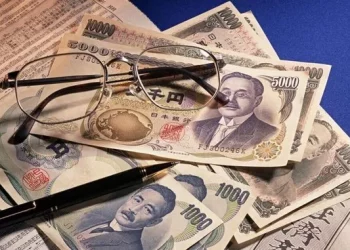The Russian ruble (RUB) is one of the oldest currencies in the world, with a history that spans over 700 years. It has survived wars, revolutions, and economic crises, making it a fascinating subject for anyone interested in money and its role in society. This article will take you through the history of the ruble, its current state, and the challenges it faces today. By the end, you’ll have a clear understanding of how this currency has shaped and been shaped by Russia’s complex history.
The Origins of the Ruble
Early Beginnings: The ruble first appeared in the 13th century in the Grand Duchy of Moscow. Back then, it was a silver coin used for trade. The word “ruble” comes from the Russian word “rubit,” which means “to chop.” This is because early rubles were literally chopped pieces of silver bars.
The Ruble in Tsarist Russia: By the 16th century, the ruble had become the official currency of the Russian Empire. Under Tsar Peter the Great, Russia began to modernize, and the ruble played a key role in this process. However, the currency faced many challenges, including inflation and counterfeiting.
The Soviet Era: A Controlled Currency
The Ruble Under Communism: After the Russian Revolution in 1917, the Soviet Union took control of the ruble. During this time, the currency was tightly controlled by the government. It was used mainly for domestic transactions and had little value on the international market. The Soviet ruble was more of a symbol of the state’s power than a tool for economic exchange.
The Collapse of the Soviet Union: When the Soviet Union dissolved in 1991, the ruble faced a crisis. The new Russian Federation had to rebuild its economy from scratch, and the ruble lost much of its value. Hyperinflation made life difficult for ordinary Russians, as prices soared and savings became worthless.
The Modern Ruble: Stability and Challenges
The 1998 Financial Crisis: In 1998, Russia experienced a severe financial crisis. The ruble lost over 70% of its value, and many banks collapsed. To stabilize the economy, the government introduced a new ruble, worth 1,000 old rubles. This move helped restore some confidence in the currency.
The Ruble in the 21st Century: In the early 2000s, Russia’s economy began to recover, thanks in part to rising oil prices. The ruble gained strength, and the government worked to keep inflation under control. However, the currency’s stability remained closely tied to global oil prices, making it vulnerable to market fluctuations.
The Ruble Today: A Currency in Flux
The Impact of Sanctions: In 2014, Russia annexed Crimea, leading to international sanctions. These sanctions, combined with falling oil prices, caused the ruble to lose value rapidly. At one point, the exchange rate reached 80 rubles to the dollar, a historic low.
Recent Developments: Despite these challenges, the ruble has shown resilience. In 2023, it became one of the best-performing currencies in emerging markets, thanks to higher oil prices and efforts by the Russian central bank to stabilize the economy. However, the currency remains vulnerable to geopolitical risks and economic uncertainty.
Challenges Facing the Ruble
Dependence on Oil: One of the biggest challenges for the ruble is Russia’s reliance on oil exports. When oil prices are high, the ruble tends to strengthen. But when prices fall, the currency suffers. This makes it difficult for Russia to achieve long-term economic stability.
Inflation and Economic Inequality: Inflation remains a persistent problem in Russia. While the central bank has made progress in controlling price increases, many Russians still struggle with the high cost of living. Economic inequality is also a major issue, with wealth concentrated in the hands of a few.
Geopolitical Risks: The ruble is highly sensitive to geopolitical events. Tensions with the West, particularly over Ukraine, have led to sanctions and economic instability. These factors make it difficult for the ruble to achieve lasting stability.
The Future of the Ruble
Short-Term Outlook: In the short term, the ruble’s performance will depend on oil prices and geopolitical developments. If tensions ease and oil prices remain high, the currency could continue to strengthen. However, any new sanctions or conflicts could quickly reverse these gains.
Long-Term Challenges: For the ruble to achieve long-term stability, Russia needs to diversify its economy. Reducing dependence on oil and investing in technology and infrastructure could help create a more resilient economy. Additionally, addressing inflation and economic inequality will be crucial for the currency’s future.
Conclusion
The Russian ruble has a long and complex history, reflecting the many changes Russia has undergone over the centuries. From its origins as a silver coin to its current role in a globalized economy, the ruble has faced numerous challenges. Today, it remains a symbol of Russia’s economic strength and vulnerability. While the currency has shown resilience in the face of adversity, its future will depend on Russia’s ability to address deep-seated economic and geopolitical issues. Understanding the ruble’s journey helps us appreciate the intricate relationship between money, politics, and society.
Related Topics:


























